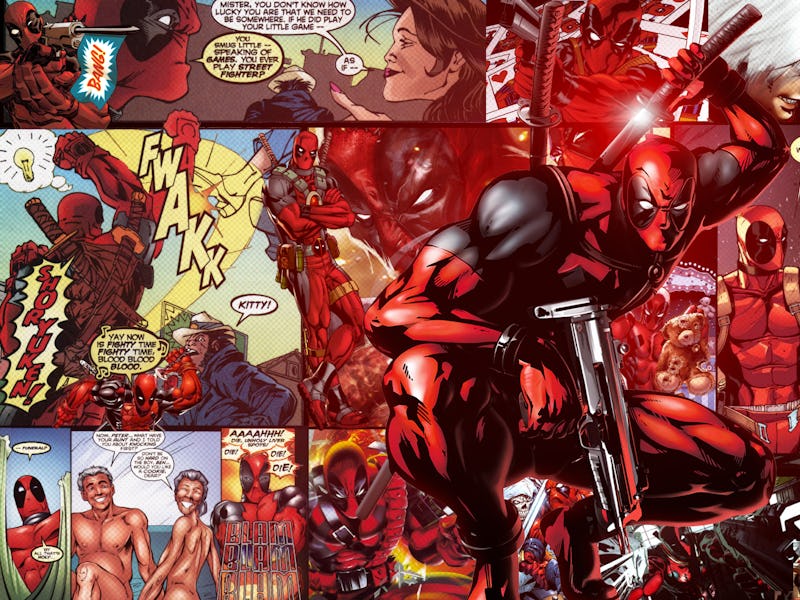The 9 Greatest Meta-Fiction Comics In History, Explained And Explored
Everybody from Deadpool to Unbeatable Squirrel Girl is talking right at you -- that's right, you!

Meta fiction is defined as a work in which the author calls attention to the literary or constructed nature of her narrative. Let’s say a space occupies the author and her writer, and that a work of traditional fiction exists in that space. Comics employ an additional degree of separation from the reader, as they’re conceived using both traditional rhetoric and what comic book analysts call “visual rhetoric”, or the building of a voice through a comic’s synthesis of images and text.
Traditionally, comic books are an escape for the reader, and the pulpy nature of their subjects — superheroes, science fiction adventurers, monsters — doesn’t often call for meta commentary. Seminal meta-fiction comics, however, play with reader expectations across genres. The best of these feel personal, and transcend comic book tropes. A few are unsettling, and a few are pure fun.
Rebirth
Geoff Johns re-introduced the subject of meta fiction to superhero fans earlier this month, when he released Rebirth #1. The comic introduces a paradigm shift for DC Comics by turning what has plagued the brand in recent years (apathetic writers, too much emphasis on spectacle and a “gritty” tone) into a physical and literal villain: Dr. Manhattan, from Alan Moore’s meta comic, Watchmen.
Watchmen
Released in two halves in 1986 and 1987, Alan Moore’s Watchmen remains (for better or worse) the most influential superhero comic of the decade. It’s a fine example of how meta fiction can work, specifically in the comic book medium. Moore’s characters, based hilariously on DC heroes he was assigned to, and then had stolen from him, reference documents which Moore renders within the book itself. His audience experiences dramatic irony, learning details of the heroes’ backgrounds before in-world characters do.
Ah, but you admit that you ARE a textual villain.
Understanding Comics
Scott McCloud wrote and illustrated one of the most beautiful graphic novels published in 2015, using his intimate knowledge of the medium to tell a heartbreaking story about art and love. In 1993, however, McCloud published Understanding Comics, a text which treated his chosen medium with the utmost intellectual respect. Later works attempted to deconstruct and experiment with the concepts McCloud laid out in Understanding, but the first book is still one of the best. It’s a user-friendly guide to meta comic art which guides the reader lovingly through McCloud’s turns of phrase and clever tricks, and it’s a must read for any intelligent fan of comics.
American Splendor
Art, for the late comics writer Harvey Pekar, was about finding patterns in his genuine frustration. Discovered by comix genius R. Crumb in the ‘70s, Pekar lent his narrative voice to hundreds of comic books, including the long-running strip he wrote and had illustrated by other artists: American Splendor.
Because Pekar’s comics were understood to be non-fiction (in as much as a comic book can be non-fiction), they feel alarmingly intimate. In between his diatribes on having cancer and deciding to marry his wife, Pekar is illustrated as speaking directly to his readers. He asks what they want from reading a comic, and expresses frustration on the limitations of his role as a narrator.
Unbeatable Squirrel Girl
Admittedly, Squirrel Girl knows it’s a meta comic modeled after classics like Deadpool — that character actually makes an appearance in almost every Squirrel Girl issue — but its self-aware, wily humor only enhances its effect on the reader, which is both pleasant and disorienting.
One of the most recent Squirrel Girl issues even framed an entire adventure as a choose-your-own comic that didn’t actually allow readers any particular choice. In typical Squirrel Girl fashion, the inner framework of the story was deconstructed, but only enough to make it feel novel.
Deadpool
Ever since Ryan Reynolds exploded into contemporary culture as the onscreen incarnation of Deadpool, most people are aware the character breaks the fourth wall often. Back when Deadpool was introduced in 1991, Rob Liefeld’s dark, self-aware humor was shocking. The character helped to take apart what made superhero stories tick, but because he was depicted as a fanboy himself, he actually worked to encourage exuberant fans of the genre. Against all odds, Deadpool became a meta superhero who only bolstered the popularity of the straightforward characters he interacted with.
Animal Man
Before he created Nameless, the most disturbing comic of 2015, Grant Morrison made a name for himself in the comic book world as an avatar for artists. What made Animal Man so disturbing, and so gloriously memorable, was that Morrison made appearances in the story, and was downright cruel to his superhero protagonist.
On Satire
Joe Sacco has a rare combination of talents, as both a gifted and insightful journalist, and an intriguing cartoonist with a unique artistic style. His non-fiction comics, Palestine and Safe Area: Goražde, are fantastic, genre-defining works, but he was at his most meta when he penned On Satire as a one-off strip, following the attacks on the French satirical weekly newspaper Charlie Hebdo.
Cerebus
Cerebus, the long-running meta comic from Canadian creator Dave Sim, twistingly and achingly folds into itself, like an ouroboros, referencing its own text and framing its action with layer over layer of meta commentary. The comic is so complex that it’s inspired legions of fans to worship and pick it apart, since it began in the late 1970s.